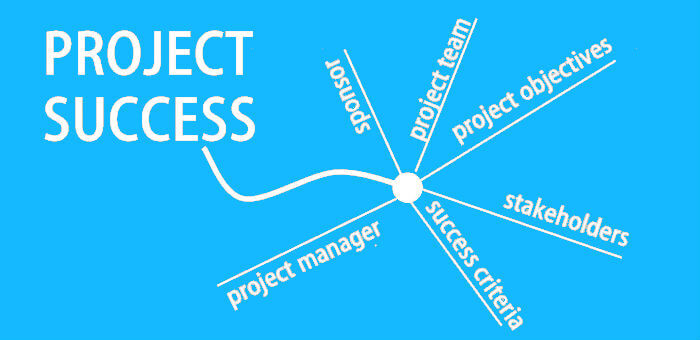Project management requires you to be communicative and solution-focused. While that seems pretty logical and straightforward, it’s not as simple as it sounds. The Project Management Institute (PMI) shares that only 46% of companies make project management a cultural priority.
What about the rest?
It takes a lot of spinning plates to keep a project on track from start to finish. Juggling everything from deadlines to team members can be challenging.
There’s no magic formula for successful project management. Instead, it’s all about understanding how to manage a project and anticipating potential roadblocks effectively.
If you’re wondering what it takes, we’ve got you covered.
How to master project management effectively
Effective project management means setting a clear project plan and using the right tools to monitor progress. The best project managers can manage setbacks while keeping the company’s goals and workflow on track.
Here are five tips for successful project management:
1. Foster clear and effective communication.
Can you picture managing a project without open communication?
Sounds awful, right? It would also be nearly impossible considering all the project requirements and decisions the important folks up the chain of command need to approve.
You simply can’t do project management independently. Even the best tools are ineffective without clear communication. But on average, how much should you communicate as a project manager?
The PMI’s Guide to the Project Management Body of Knowledge (PMBOK) states 75-90% of a project manager’s time is spent communicating.
That’s because a good project manager knows how to create a highly collaborative environment, promote engagement, and keep the discussions sane.
With that in mind, here’s how to establish effective communication during projects:
- Hold regular meetings with team members to ensure everyone is on the same page on deliverables and deadlines. Use these meetings as a platform for the project team to share any concerns or ideas.
- Send out project reports regularly to relevant stakeholders to make them aware of any project changes or new developments.
- Consider multiple points of view instead of just your own. It will help you recognize when someone else’s idea is better or when you’re wrong about an issue.
2. Set clear goals for your project.
A great project manager sets the right goals and milestones to complete projects and manage stakeholder expectations.
With project or product management, you must understand the overall mission before diving into the many tasks needed to complete it. Doing so helps keep everyone on track toward that specific goal.
“Our goals can only be reached through a vehicle of a plan, in which we must fervently believe, and upon which we must vigorously act. There is no other route to success.”
― Pablo Picasso.
When your project goals are unclear, your productivity goes down. In a survey carried out by Asana, 27% of respondents said that one of the top barriers to productivity is a lack of clarity due to unclear processes.
With projects becoming more complex, you have to look beyond the usual requirements of, managing leads, budgets, and timelines and start setting SMART (Specific, Measurable, Achievable, Relevant, and Time-bound) goals.
Setting SMART goals is crucial when managing critical projects. Make sure you’ve cemented the following elements well:
- Realistic goals.
- Timelines that must be met.
- Goals split into smaller actionable targets spread throughout the project.
- Proper measurable metrics for the goal.
- Clear definition of what a return on investment (ROI) entails for the project.
Once you establish your goals, start working on the project management processes. Use project management tools with features such as Gantt charts, time tracking, and Kanban boards to help your team track their progress.
3. Use the right tools to monitor progress.
It’s easier for your team to operate at a top-level with the right project management software. Nothing slips through the cracks since everyone sees what needs to be done.
You should pick software your team enjoys using. After all, getting your project members to trust the software you choose is essential. From well established businesses to effective start-up project management without the right tools you’re going to struggle.
Select a tool that streamlines processes. The less double-entry you need to do, the more efficient you’ll be. And the fewer screens you need to open at a time, the fewer clicks it’ll take to get something done.
Monday.com shares that 54% of workers spend five or more hours per week on repetitive tasks that need little or no creativity. So the software has to reduce tedious tasks, not make more of them.
For example, Blink’s Micro-apps can do just about anything you need them to. It’s also easy to build your own Micro-apps, and you can use them from anywhere, making them ideal for your entire team.
When selecting a project management software, make sure:
- It has the features closest to your project needs and can scale with you as you grow. That way, you’re not forced to switch to another software later.
- It increases productivity, minimizes inefficiencies, maximizes margins, and provides a more significant ROI.
- It’s available on your teams’ preferred devices. If your team members are working remotely, make sure there’s an employee app available for mobile devices.
- It has a clean, modern design to minimize distractions, which can happen in a cluttered dashboard.
4. Work with a flexible team whose skills combine well.
A project is only as good as the people who work on it. You need to look for specific skills that indicate who collaborates well with others.
“Get the right people. Then no matter what else you might do wrong after that, the people will save you. That’s what management is all about.”
― Tom DeMarco.
You need the right mix of personalities and skills to ensure a task gets done with maximum effectiveness and minimum friction. If you do it right, you’ll improve both the project’s efficiency and outcome.
Here are some traits to look for when selecting effective project team members:
- They must have excellent communication skills to interact with different people.
- They should have a basic knowledge of project management methodologies such as Agile and Waterfall to give them a solid foundation when working on the project.
- They must be highly organized to keep up with the project scope at all times.
- They should know how to leverage project management software to stay organized even under significant pressure.
Remember that even an employee with an advanced skill set needs some training to shine as a project team member. So you must be willing to invest in their personal and professional development and cultivate their soft skills.
5. Motivate your project team members.
Skilled project managers know there are times when Waterfall diagrams, Gantt charts, or even work breakdown structures aren’t enough to help team members progress towards the finish line.
Sure, they can help. But your team members need some (or, sometimes, a lot of) something else: motivation.
It can be challenging to motivate yourself at work, especially when dealing with a heavy workload and other demands. But you must encourage and motivate your team members to have a happy and productive team.
A motivated team will be highly engaged and go above and beyond to ensure the project’s success. A Harvard Business Review survey revealed 56% of the participants said their company has achieved positive ROI by investing in employee engagement strategies.
Naturally, you cannot control each member’s attitude towards the project. Still, you can use these tips to motivate and excite your team:
- Compliment team members who’ve gone above and beyond. Make sure to do so in front of your team to inspire other team members and show them the results of working hard.
- Make sure you have multiple communication channels so that communication between members remains fluid and accessible. It’ll help your team feel supported as you progress with the project.
- Let your project team know that you trust their abilities. It’ll make them more proactive and creative.
- Create an open environment where your team is free to express their points of view. It’ll help you identify some team assumptions that could hurt the project quality.
6. Identify and plan for risks
Risk management is a crucial aspect of project management. In the planning stage, it is essential to recognize significant risks and assess their likelihood of happening. By doing this, you can efficiently mitigate the adverse impacts of project risks for yourself and your team members.
7. Focus on completion, not perfection
Don’t get caught up in minor imperfections, prioritize the main goal at hand. Remember, the ultimate objective is to move forward and make progress.
Whilst you want to ensure quality, don’t strive for perfection. Acknowledging that some imperfections may exist can save time and enhance overall efficiency.
8. Identify and interact with key stakeholders
Nurturing effective communication with key stakeholders can boost support for your project. It ensures that your project remains on track by staying informed about requirements and any potential changes. By fostering good relationships it makes it a lot easier to deliver good, or bad news and to combat some of the common problems in project management. Which we discuss shortly.
9. Be a leading example
When taking charge of a project, it’s crucial to bear in mind that leading by example is one of the most effective methods for instilling valuable habits in team members. By practicing the desired behavior yourself, you become a role model for the team, positively influencing their work approach and bolstering your own authority.
Hence, when aiming to implement a specific work practice or procedure, successfully embodying it yourself can serve as a compelling demonstration for others, inspiring them to emulate your actions.
10. Don’t pretend you know everything, ask if you don’t
Thinking you know everything and not asking “that question” will harm you in the long run. You’ll need to find a balance between asking questions or following up offline after update meetings. But, don’t be shy.
Ask questions, and make sure you and your team have all the information and understanding they need to successfully move the project forward. If you don’t ask “that question” you may find it terms into a blocker further down the line.
As a project manager, you need the help of a trusted team and the right tools and software to succeed in your projects.Finding a management tool to improve team communication is critical to your project’s success. For professional project or task managment services, you can reach out to 9east marketing services for a free consultation call to hear your issue and suggest an effective solution.





